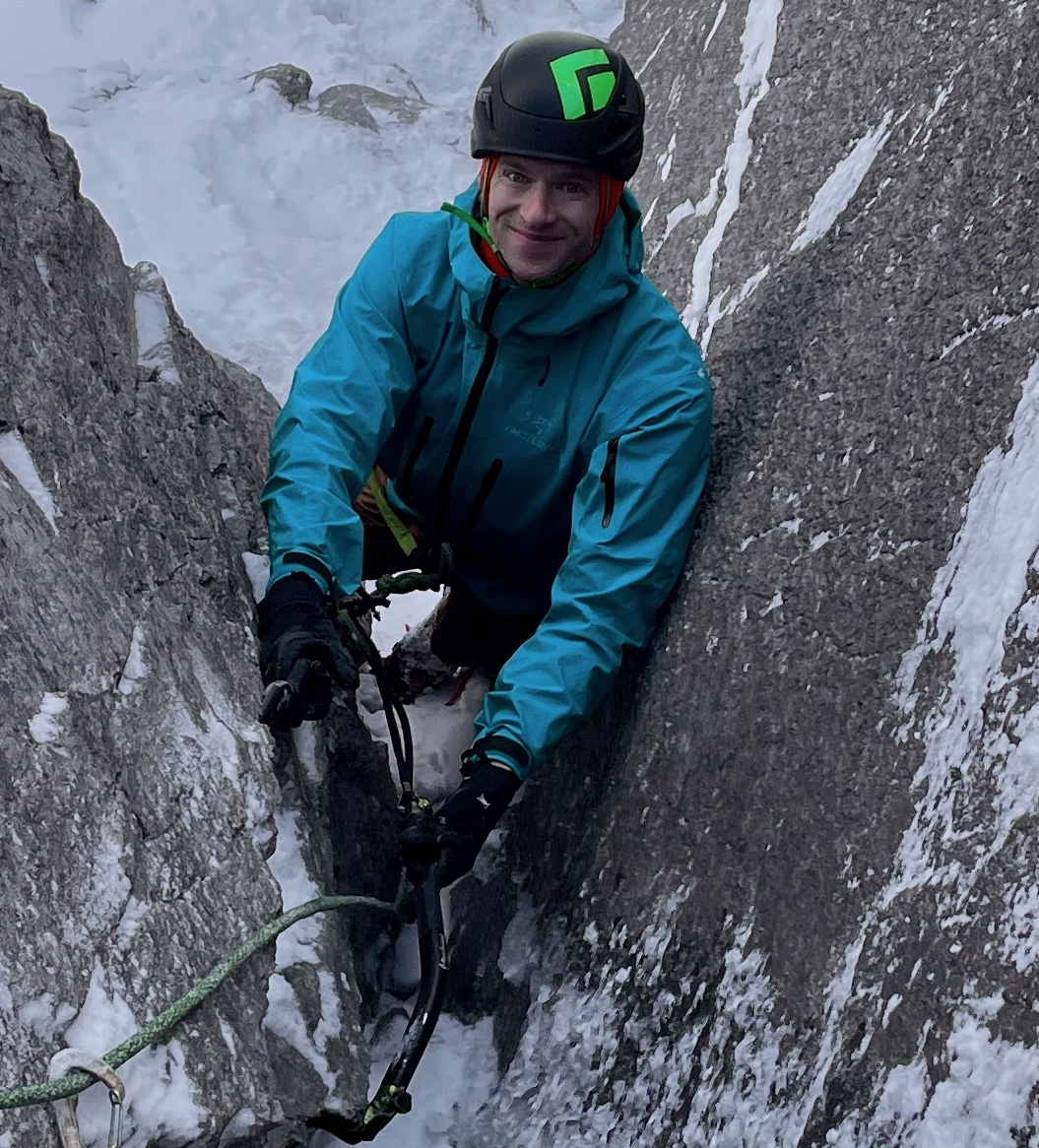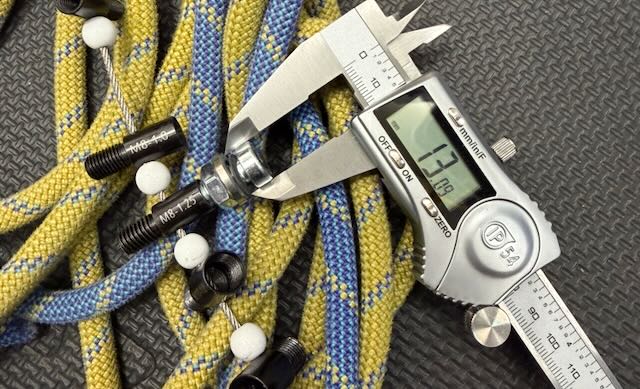I was standing at a belay on the Stanley Headwall, waiting while my partner rappeled. Our tagline was shorter than our lead line, but it didn’t matter; we were pretty sure our tails touched the ground.
Suddenly, the rope was moving fast. The knot shot upward through our V-thread cord and started cruising back down. It travelled a few meters before I could blink.
Did they just… did they just rap off the end of the tag?
I tugged upward on our ropes and met no resistance.
“Are you okay??”
“Off rappel!”
“(Confused noises)”
It’s a damn good thing it was our last rappel. My buddy had rappeled off the end of our tag and fallen a body length or two while still attached to our lead line. Fortunately, it was a soft snow slope below, and they stuck the landing.
I’ll be adding photos to this post down the road to add clarity.
How we screw up rappels
The two most common ways to screw up a rappel are:
- Rig your belay device wrong
- Rappel off the end of the rope
What if I told you there was a way to help mitigate both of these situations, and it also saved time?
Stacked rappels
Simply put, stacking rappels refers to loading the rope into multiple climbers’ belay devices at the same time. Whoever is lowest rappels first. Generally, this is done to save time and to provide an opprotunity to double-check that a less experienced climber has set up their rappel correctly. But a side effect is that it locks the rope in place.
Clip both ropes!
When rigging a rappel, it’s easy to accidentally clip your carabiner through only one rope instead of two. If you do this and start rappeling, you’re basically just pulling on one side of the rope, which can zip through the anchor as you fall. A prussik can help mitigate this, but it isn’t a guarantee. With a stacked rappel, the rope is locked in place, and all that happens is one strand pops out of your belay device. You’re left hanging on a single strand, which is a recoverable situation.
If it’s the upper belay device that is rigged wrong, the loose strand will be popped out by the weight of the lower climber. Again, you’ve identified the problem without suffering any consequences.
One knot is enough
Tying knots in both tails is a pain. The first one is easy; you thread that end through the anchor. But the second one that sailed past you and cracked like a whip 70 meters below? Do you really want to pull it up to tie a knot? You should, but the rope probably reaches anyway…
Good news. You know how stacked rappels kept us safe when we only clipped one strand? The same principle helps out if you only tie a knot on one side. If you rap too far, one end will slide out, but your belay device will hit the knot on the other. Your partner’s belay device will keep the rope locked in place, and you’ll be left hanging on one strand. This may be a damn exciting situation, but you’re alive and can ascend the rope or otherwise rectify things.
Some stacked rappel tips
A lot of times, it’s easy to rig multiple extended belay devices and still stand comfortably. But here are a couple of ways to handle it when your stance is awkward.
- Use a separate personal anchor and rappel extension. Running a single-length sling through your belay loop works well as a rappel extension and separates your belay device from your connection to the anchor.
- If you’re last to rappel, just put your belay device loaded on the rope, unattached to you. This may initially seem odd, but it buys you roughly the same additional safety. When it’s your turn, clip it into your rappel extension and go.
Other tips
I never thought about this one until I recently heard a scary story from a friend: Always tie knots in the ends of your rope when saddlebagging. You don’t have a visual queue for where your ropes will reach to when you’re rappeling with saddlebags. You also don’t have any visual reminder about whether you have knots. Together, these factors make it much easier to rappel off the end of the rope. If you’re worried about wind, saddlebags (preferably) OR no-knots can be a solution, but never both.
One of my favourite expressions is, “Try before you fly.” If you weight your rappel system while still connected to the anchor, it’s easy to identify and correct anything wrong. Sometimes, I’ll bump my personal anchor onto my partner’s belay loop to give myself enough slack to test my rappel while still being (indirectly) attached to the anchor.
I want to keep this post somewhat focused, but for more tips, check out Will Gadd’s thoughts




